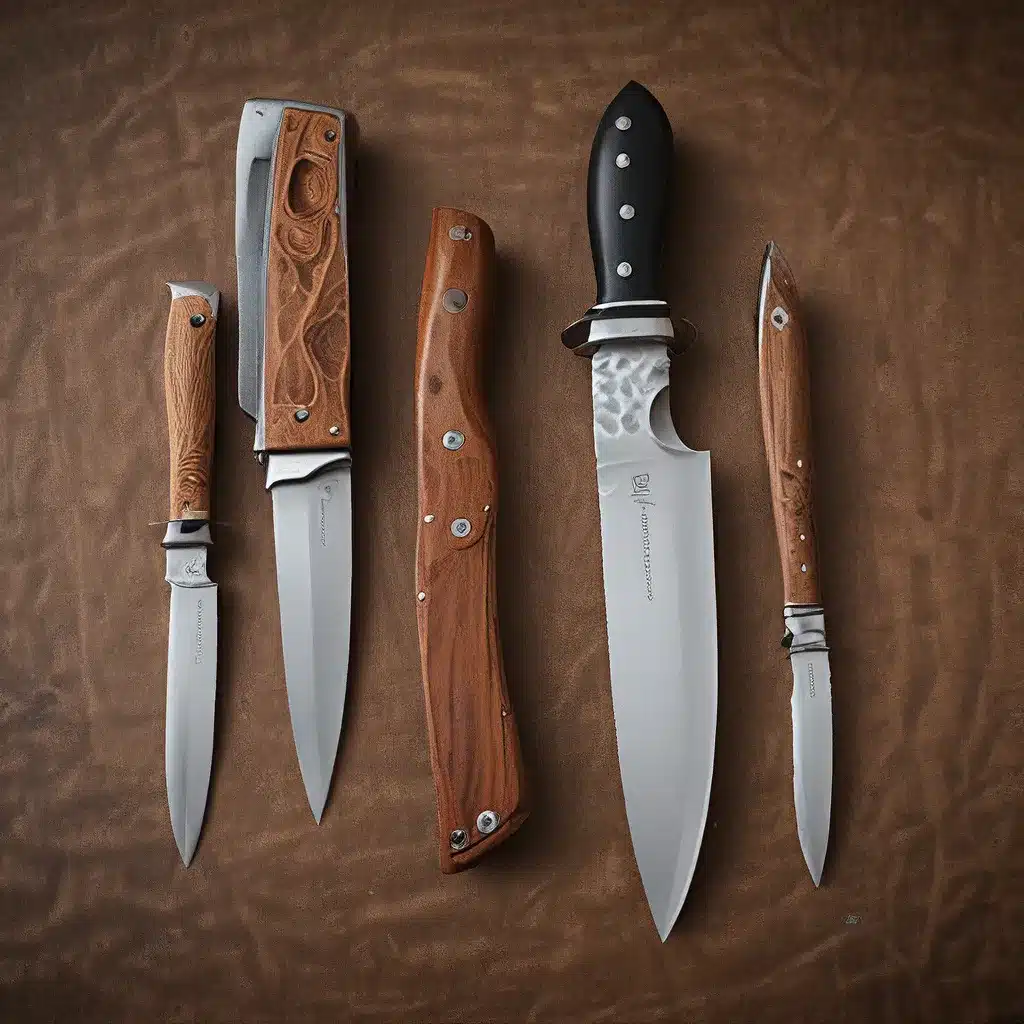
Ah, the humble knife – a tool so ubiquitous, yet so essential to our daily lives. From the dawn of humanity, when our ancestors first fashioned sharp stone tools, to the gleaming, high-tech blades of today, the evolution of the knife is a captivating tale that reveals our ingenuity, our culinary passions, and our never-ending quest for innovation.
The Primal Roots of Knife-Making
Let’s rewind the clock a few millennia, back to a time when our forebears were foraging the wilderness and hunting their prey. The earliest knives were rudimentary affairs, fashioned from stone, bone, and wood – crude but effective tools that enabled our ancestors to slice, cut, and carve their way through the challenges of survival. These primitive blades were not mere instruments; they were extensions of the human hand, a tangible manifestation of our primal need to shape the world around us.
As our ancestors became more skilled in the art of toolmaking, the knife evolved alongside our ingenuity. The introduction of metals, such as bronze and iron, marked a significant turning point, allowing for the creation of longer-lasting, sharper, and more versatile blades. With each technological advancement, the knife became an increasingly indispensable companion, aiding in tasks ranging from food preparation to weapon-making.
The Culinary Revolution
Interestingly, the knife’s evolution is deeply intertwined with the story of human culinary development. As we transitioned from a hunter-gatherer lifestyle to more settled agricultural societies, the role of the knife expanded beyond mere utility. It became an essential tool in the kitchen, enabling us to transform raw ingredients into the mouthwatering dishes that have nourished and delighted us for millennia.
The rise of specialized knives, each designed for a specific culinary task, is a testament to our growing mastery of the culinary arts. From the slender, nimble paring knife for delicate peeling and trimming, to the hefty chef’s knife for dicing, mincing, and chopping, each blade is tailored to the unique demands of the kitchen. And let’s not forget the serrated bread knife, whose jagged edge effortlessly slices through crusty loaves, or the carving knife, with its long, thin blade that allows for precise, elegant cuts of roasted meats.
But the knife’s impact on cuisine extends far beyond the confines of the kitchen. The introduction of the steak knife, for instance, revolutionized the way we dine, transforming the act of eating into a more refined and civilized experience. And the humble butter knife, with its gently curved blade, has become a ubiquitous presence on tables worldwide, a symbol of the simple pleasures of spreading a pat of butter on warm, freshly baked bread.
The Modern Blade Renaissance
As we move into the 21st century, the knife has undergone a remarkable renaissance, with a new generation of blade enthusiasts and innovators pushing the boundaries of design and functionality. These cutting-edge creations are not just tools – they are works of art, reflecting the intersection of form and function, tradition and modernity.
Take, for example, the rise of the Damascus steel knife, with its mesmerizing, wavy patterns and unparalleled sharpness. These blades, forged using ancient techniques, have captured the imagination of chefs and knife aficionados alike, evoking a sense of timeless craftsmanship. Meanwhile, ceramic knives, with their lightweight, corrosion-resistant, and incredibly sharp properties, have become increasingly popular, offering a sleek and innovative alternative to traditional steel blades.
But the true marvel of the modern knife lies not only in its physical attributes but also in the technological advancements that have transformed the way we interact with these tools. The advent of self-sharpening knives, for instance, has revolutionized the way we maintain our blades, ensuring they stay razor-sharp with minimal effort. And the integration of smart technology into knife design, such as blade sensors that provide real-time feedback on sharpness and usage, has taken the humble knife into the digital age.
The Future of the Cutting Edge
As we gaze into the horizon, the future of the knife is a tantalizing prospect, brimming with endless possibilities. Imagine a world where 3D-printed knives, customized to the unique contours of our hands, become the norm. Or envision a time when robotic knife assistants, equipped with precise, AI-powered cutting algorithms, transform the way we prepare our meals.
Perhaps the most exciting aspect of the knife’s future is the way it will continue to intersect with our evolving culinary landscape. As the world becomes increasingly interconnected, the exchange of culinary traditions and techniques will undoubtedly inspire new generations of knife designers and users. Who knows? The humble knife may one day become the catalyst for a global culinary renaissance, uniting people across cultures through the shared language of food and the tools that shape it.
One thing is certain: as long as there is a human need to slice, cut, and shape our world, the knife will remain an indispensable companion, a testament to our ingenuity, our creativity, and our unrelenting desire to push the boundaries of what’s possible. So, let us raise a (freshly sliced) glass to the knife, and to the endless possibilities that lie ahead on the cutting edge of innovation.
And remember, when you’re ready to upgrade your own culinary toolkit, be sure to check out Herman Knives – where the past, present, and future of the knife converge in a symphony of form, function, and artistry.


